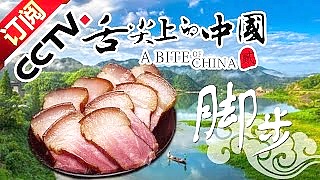Or Tofu, as they say in HK / West.
With chick peas, Shiitake mushrooms, chili oil and SiChuan peppercorns ...
[640],shadow=true,start=,stop=Chili oil ...
Wil Yeung :
Ingredients:
4 dried shiitake mushrooms
2 1/2 cups water
3 sticks green onion
1 cup canned chickpeas
1lb soft or medium firm tofu
2 pieces garlic
1 small piece ginger
1-2 tsp Sichuan peppercorns (or black peppercorns)
3 tbsp chili oil (https://youtu.be/DUDKIcYltZA)
1 tsp chili powder
2 tbsp doubanjiang (Chinese broad bean chili paste)
1 tsp cane sugar
1 tbsp soy sauce
splash of rice vinegar
1 tbsp potato starch + 1 tbsp water
Directions:
1. Place the dried shiitake mushrooms in a small saucepan and add in the water. Cover and bring to a boil
2. Chop the green onion. Roughly crush the chickpeas with a fork
3. When the water comes to a boil, simmer on medium for 10min
4. Drain out the tofu and carefully slice into cubes
5. Pour out and reserve the mushroom water. Cool down the mushrooms with cold water and squeeze out the liquid. Then, remove the stalks from the mushrooms and finely dice
6. Finely chop the garlic and ginger
7. Heat up a sauté pan to medium heat. Toast the peppercorns for 1min. Then, grind down the peppercorn in a pestle and mortar
8. Place the pan back onto medium heat. Add the chili oil
9. Sauté the chickpeas and mushrooms for 1-2min. Add the garlic and ginger and sauté for another minute
10. Add in the chili powder, crushed peppercorn, and the doubanjiang. Give the pan a good stir, then add in the reserved mushroom water
11. Add in the cane sugar, soy sauce, and rice vinegar. Give the pan a stir
12. Make a slurry by combining the potato starch with 1 tbsp water
13. Slowly pour in the slurry while stirring
14. Add in the tofu and gently stir around them
15. Plate and garnish with the chopped green onion
Bonus film - vegan Dan Dan Mian (noodles) ...
[320],shadow=true,start=,stop=Ingredients:
4 broccolini
1 large piece garlic
small piece ginger
2 sticks green onion
1/2 cup canned chickpeas
small bunch canned bamboo
2 tbsp white sesame paste (or tahini)
3 tbsp soy sauce
3 tbsp chili oil (https://youtu.be/DUDKIcYltZA)
1 portion Chinese wheat noodles or udon
1/2 tbsp Sichuan peppercorn
drizzle of grapeseed oil
1 tsp liquid smoke
2-3 tbsp crushed roasted peanuts
1 tbsp white sesame seeds
Directions:
1. Chop the broccolini into bit sized pieces. Finely chop the garlic and ginger. Chop the green onion separating the white part from the green
2. Roughly mash the chickpeas in a small bowl with a fork. Slice the canned bamboo
3. Bring a small pot of water to boil for the noodles
4. Make the sauce by combining the sesame paste, 2 tbsp soy sauce, chili oil, and the green part of the green onions
5. Boil the noodles to package instructions
6. Heat up a sauté pan on medium heat and toast the peppercorns for 45sec
7. Crush the peppercorns in a pestle and mortar. Place the pan back on the heat and drizzle some grapeseed oil
8. Add the garlic, ginger, and green onion
9. Add the broccolini and sauté for 3-4min
10. Add the chickpeas, bamboo, and liquid smoke. Sauté for 4min
11. Add the crushed peppercorns and 1 tbsp soy sauce. Give it a good stir, then turn off the heat. When the noodles are cooked, strain out the water
12. Pour the prepped sauce into the serving bowl
13. Add the noodles into the sauce and top with the sautéed veggies
14. Top with the crushed peanuts and sesame seeds
ORDER YOUR SIGNED VEGAN RAMEN COOKBOOK + GET YOUR FREE E-BOOK + TAKE YOUR VEGAN SUSHI MASTERCLASS HERE:
https://www.yeungmancooking.com
Chinese cuisine is an intricate tapestry of flavors, techniques, and regional specialties that has evolved over thousands of years. From the fiery spices of Sichuan to the delicate dim sum of Cantonese cuisine, every region of China offers its own culinary delights. For visitors to China, exploring the diverse and dynamic world of Chinese food is an essential part of experiencing the country's rich cultural heritage. Here's a more extensive exploration of Chinese cuisine for visitors:
Regional Diversity:
Sichuan Cuisine: Hailing from the southwestern province of Sichuan, this cuisine is famed for its bold, spicy, and numbing flavors. Sichuan peppercorns, chili peppers, and aromatic spices are used liberally in dishes like Mapo Tofu, Dan Dan Noodles, and Sichuan Hot Pot, creating a symphony of flavors that tingles the taste buds.
Cantonese Cuisine: With its emphasis on fresh ingredients and delicate flavors, Cantonese cuisine is highly regarded for its seafood dishes, roasted meats, and dim sum. Steamed fish, Char Siu (barbecue pork), and Har Gow (shrimp dumplings) are just a few examples of the exquisite dishes that showcase Cantonese culinary mastery.
Shanghai Cuisine: Reflecting its coastal location and cosmopolitan history, Shanghai cuisine combines influences from Jiangsu, Zhejiang, and Anhui provinces. Sweet and Sour Mandarin Fish, Shanghai Soup Dumplings (Xiaolongbao), and Drunken Chicken are some of the signature dishes that highlight the diverse flavors and textures of this culinary tradition.
Beijing Cuisine: As the capital of China, Beijing boasts a rich culinary heritage deeply rooted in imperial traditions. Peking Duck, a dish with crispy skin and succulent meat served with pancakes and hoisin sauce, is a quintessential Beijing delicacy. Other notable dishes include Zhajiangmian (Beijing Noodles), Mongolian Hot Pot, and Beijing-style meat pies.
Hunan Cuisine: Known for its bold and aromatic flavors, Hunan cuisine features dishes that are spicy, sour, and intensely flavorful. Chairman Mao's Red-Braised Pork, Dong'an Chicken, and Steamed Fish Head with Chopped Chili exemplify the fiery and robust nature of Hunanese cooking, which makes ample use of chili peppers, garlic, and fermented ingredients.
Street Food and Snacks:
Jianbing: This savory Chinese crepe is a popular breakfast option, consisting of a thin pancake filled with eggs, scallions, cilantro, and various fillings such as crispy fried dough, pickled vegetables, or chili sauce.
Baozi: These steamed buns are filled with a variety of savory or sweet fillings, including pork, vegetables, or red bean paste. Baozi are a popular street food snack and can be found in teahouses, markets, and street stalls across China.
Roujiamo: Often referred to as Chinese Hamburgers, roujiamo features savory braised meat stuffed inside a flatbread, offering a hearty and flavorful snack that's perfect for on-the-go eating.
Dining Etiquette and Customs:
Family-Style Dining: Chinese meals are typically served family-style, with multiple dishes shared among diners seated around a table. It's customary to use chopsticks to pick up food from communal dishes and to serve elders before oneself.
Toasting and Ganbei: When dining with Chinese hosts, expect toasts (ganbei) with alcohol, usually baijiu (Chinese liquor). It's polite to reciprocate the toast and drink in moderation, but declining politely is acceptable if you don't drink alcohol.
Tea Culture: Tea is an integral part of Chinese dining culture, with a wide variety of teas available to complement different dishes. Green tea, oolong tea, and pu'er tea are among the most popular choices, and serving tea to guests is a sign of hospitality and respect.
Street Markets and Night Markets:
Wangfujing Snack Street, Beijing: Located near the Forbidden City, this bustling street market offers a wide variety of traditional snacks, street food, and local delicacies. Visitors can sample everything from scorpions on a stick to traditional Beijing snacks like Jianbing and Tanghulu (candied fruit skewers).
Shanghai Old Street, Shanghai: Nestled in the heart of the city's historic district, Shanghai Old Street is a bustling marketplace where visitors can explore narrow alleyways lined with traditional shops, street vendors, and food stalls. From steamed dumplings and stinky tofu to hand-pulled noodles and sugar-coated haws, there's something to satisfy every craving.
Dietary Considerations:
Vegetarian and Vegan Options: While Chinese cuisine traditionally features a wide range of meats and animal products, vegetarian and vegan options are becoming increasingly available, especially in larger cities and tourist destinations. Buddhist restaurants (????, s�sh� c?nt?ng) often offer meat-free versions of classic dishes, and plant-based ingredients like tofu, mushrooms, and seasonal vegetables are widely used in Chinese cooking.
Exploring the diverse and delicious world of Chinese cuisine is an essential part of any visit to China. From regional specialties and street food snacks to dining etiquette and cultural customs, the culinary landscape of China offers a rich tapestry of flavors, traditions, and experiences that are sure to delight and inspire visitors from around the world. Bon app�tit!.
 MaPo DoFu – vegan / vegetarian recipe version
MaPo DoFu – vegan / vegetarian recipe version





















